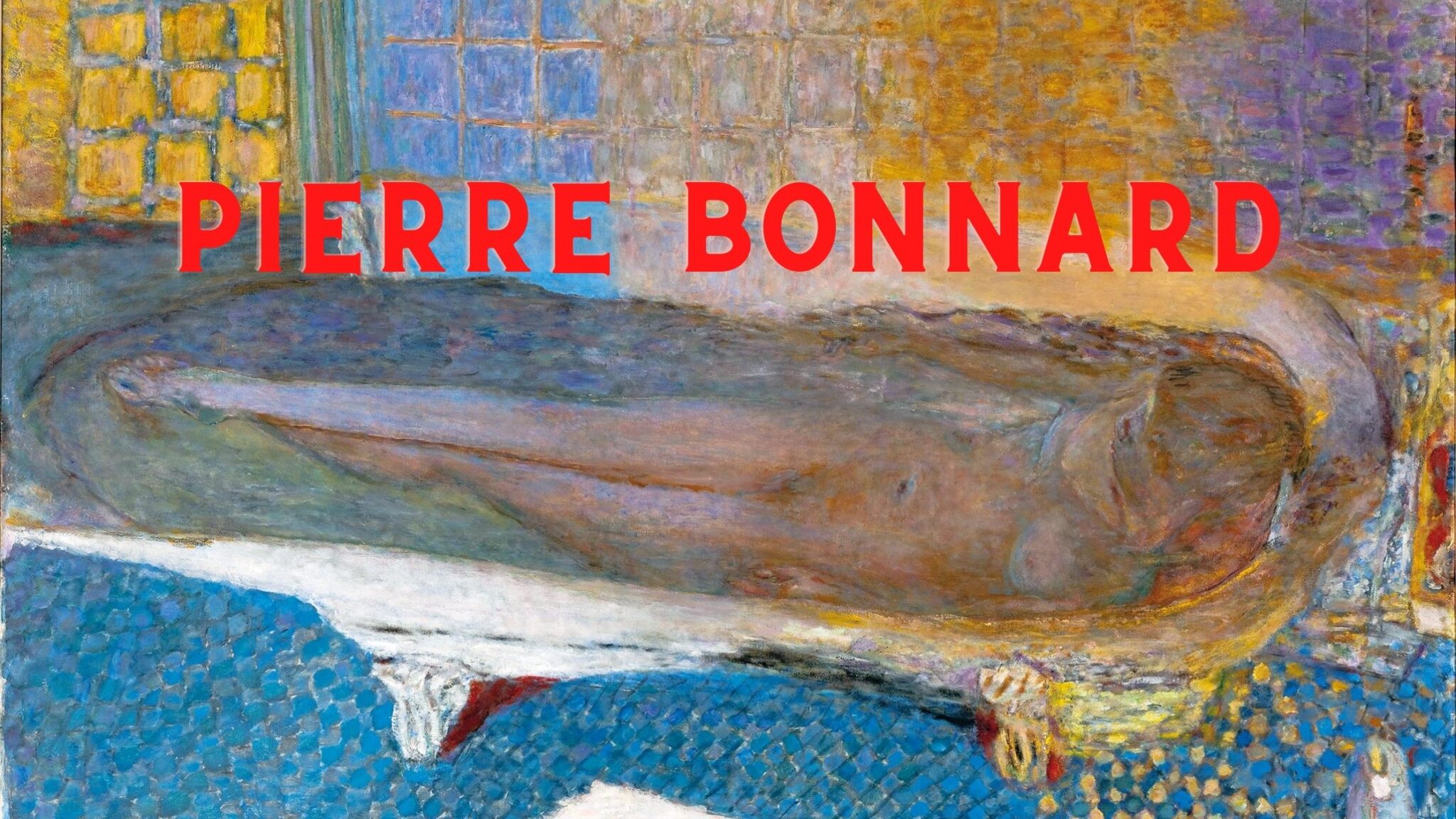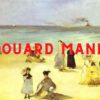
Pierre Bonnard Paintings – History And Compilation
History of Pierre Bonnard
Pierre Bonnard is a French artist closely associated with the group «Nabi.» Bonnar was called Japanese or «Japanese Nabud» for his addiction to Japanese engraving and oriental ornamental. Subsequently, the artist departed from the principles of «Nabi,» his palette became more saturated, and color contrasts replaced the glow of light.
The main genres of Bonnard were family portraits, nudes, landscapes. Color, color combinations, and contrasts are Bonnard’s works’ main characters, whatever genre they belong to.
He was born on October 3, 1867, in Paris. The son of a high-ranking military official and a noble nobleman is accustom to a lively life, a happy family atmosphere, and harmony. Bonnard had several prestigious high schools, including Louis de Gran. The father hoped to make his son a lawyer. Bonnard did not want to defend his right to become an illustrator and went to a law academy, but in parallel entered the Académie Artiste Julian. There was a company called Paul Seruzier, Maurice Denis, Eduard Vuillard, Paul Ranson. In their work, they orient towards Paul Gauguin. Suzie even went to see him in Brittany and was so impressed by the meeting that upon his return, he organized the group «Nabi» (Fra. Nabis – prophet), which included Pierre Bonnard. The name implies a memorable mystical experience available to participants, their dedication to some secret knowledge. The Nabeds looked for absolutes, complex symbolism, an opportunity to express the inner world through bright colors. Artists in this field preferred decorative and plane stylization.
At the start of the movement, Bonnard spends several hours a week in government archives. The fee he receives allows him to proceed with studying illustration and painting.
At that moment, he corresponds to his mother: «In fact, I am happy because I secure my future and can not interrupt my favorite lessons.» While 1889 Bonnard moved the archives to begin operating in the prosecutor’s office, wherever he goes, as «hard labor.»
In March 1891, he exhibited inside the Hall of the independents. Five years later, at Duran-Ruel, his initial solo exposition. At the start of his creative activity, people knew him as posters, lithographs, and illustrations creator. The first poster, ordered by France-Champagne also displayed on Paris’s walls in March 1891, is recognized by the public. She admires Toulouse-Lautrec and Felix Phoenion (a famous art expert), his father – according to Bonnard’s mother – dances with joy. Bonnard takes this moment to finally break with the practice of law and devote himself entirely to the profession – painter.
Since 1891, he and buddies Villar and Maurice Denis have filmed a workshop in Pigalle’s vicinity. He depicts numerous scenes of the days in Paris. While in 1894, the artist created a popular sheet for the journal «La Revue Blanche.» While doing it, he began a brief career as an illustrator. His creative activities are very diverse. Additionally, Bonnard also produces theatrical designs and drawings of interior decorations, and during 1895 takes part in a dining room furniture competition arranged by the School of Decorative Arts. But he does not forget painting, showing off daily with other children. Moreover, the artist exhibits independently of the group. He sends pictures practically every time to the Hall of the Independents.
In 1893, Bonnard met the 24-year-old Marie Butsen, a muse who would inspire him to create numerous nudes, including genuine masterpieces. The artist and his model will live together for more than 30 years before they formalized their relationship in 1925.
Martha posed for Bonnard about 400 times by the most conservative calculations, and there is not a single painting where her body “aged.”
The work of “The Idle Woman” is an image of the naked body and, as it were, invites the viewer to enter the world of the painting. Martha’s face is in the shadows, which enriches the picture with an erotic component and a taste of mystery. The female’s head cat is a character who is usually emphasized not only by the home comfort but also by the intimate scenes.
Bonnard was often with friends abroad: in Switzerland, Venice and Milan, Spain, Holland, Belgium, England. The artist invariably visited the great European museums. In 1908, he opened up Algeria and Tunisia. His love of travel arises from his unsatisfied curiosity and the need for a constant change of scenery. Despite her high origins, Bonnard is satisfied with modest hotel rooms. He has enough tables, canvas, and brushes to work. He needs neither luxury nor convenience; he is a man with modest needs.
Pierre Bonnard was firstly displayed at the Bernheim Jon Gallery in December 1906. After that, he will regularly present his works there. The same year, a little earlier, the artist admired the trip to Marseille, Toulon, and Baniol, south of France. In 1909, Bonnard spent his first time in southern France in Saint-Tropez, a small Provençal town that had already fascinated the post-impressionists. He will often return to Saint-Tropez, including in 1911 with Paul Sinyak. The artist will also live in Cannes and Antibes.
He regularly took part in many exhibitions, art dealers tried hard to get his paintings, and his fame crossed France’s borders and spread throughout the world.
Invited as a jury member of the Carnegie Prize, the artist attended a meeting with the American public in 1926. He visits Pittsburgh, then Chicago, New York, and Washington. His first solo exhibition takes place two years later in New York City at the De Hock and Coe Gallery. In 1936, he got the 2nd Carnegie Prize.
Bonnard lives in Cannes and Vernon. Despite frequent trips, he remained loyal to Paris: from 1911 until his death, he rented a workshop on Turlak Street. However, the artist complains about life in the big city: I don’t spend more than two months in Paris a year. I can not work there: too much noise, too many things distract my attention».
In 1939, Bonnard made his last trip to Normandy. He sells a house in Vernon and returns to a villa in Cannes. The artist decides not to return to Paris or exhibit his paintings during the German occupation. In the south, the artist gets close to Matisse, who turns out to be his neighbor. But Bonnard is plagued one by one by the loss of his friend Villar in 1940 and Martha in 1942. The artist suffers greatly, but modesty allows him to share his feelings only with his closest friends, including Matisse.
At the end of World War II, in 1945, Bonnard briefly moved to Paris. In Cannes, he returns in the company of René’s niece Terrasse, who will live with him to the end, trying to make his loneliness go away.
On January 23, 1947, the artist died in his small estate on the Côte d’Azur – «Le Bosque.» Pierre Bonnard did not live very long for his 80th birthday. In the same year, a large retrospective exhibition of his works was organized at the Paris Greenhouse Museum, informing France of the loss of one of the most prominent colorists of the twentieth century and one of the most subtle painters.
Bonnard never sought honors. At the end of his life, his paintings’ prices were very high, which he did not like very much. The artist said: «All these zeros annoy me.» Despite honor and fame, Bonnard was not rich and always satisfied with the most necessary. The artist was straightforward in treating people, never putting himself above others, whether colleagues, critics, or admirers of his work. Fame has not changed his character, nor his humble and quiet way of life.




